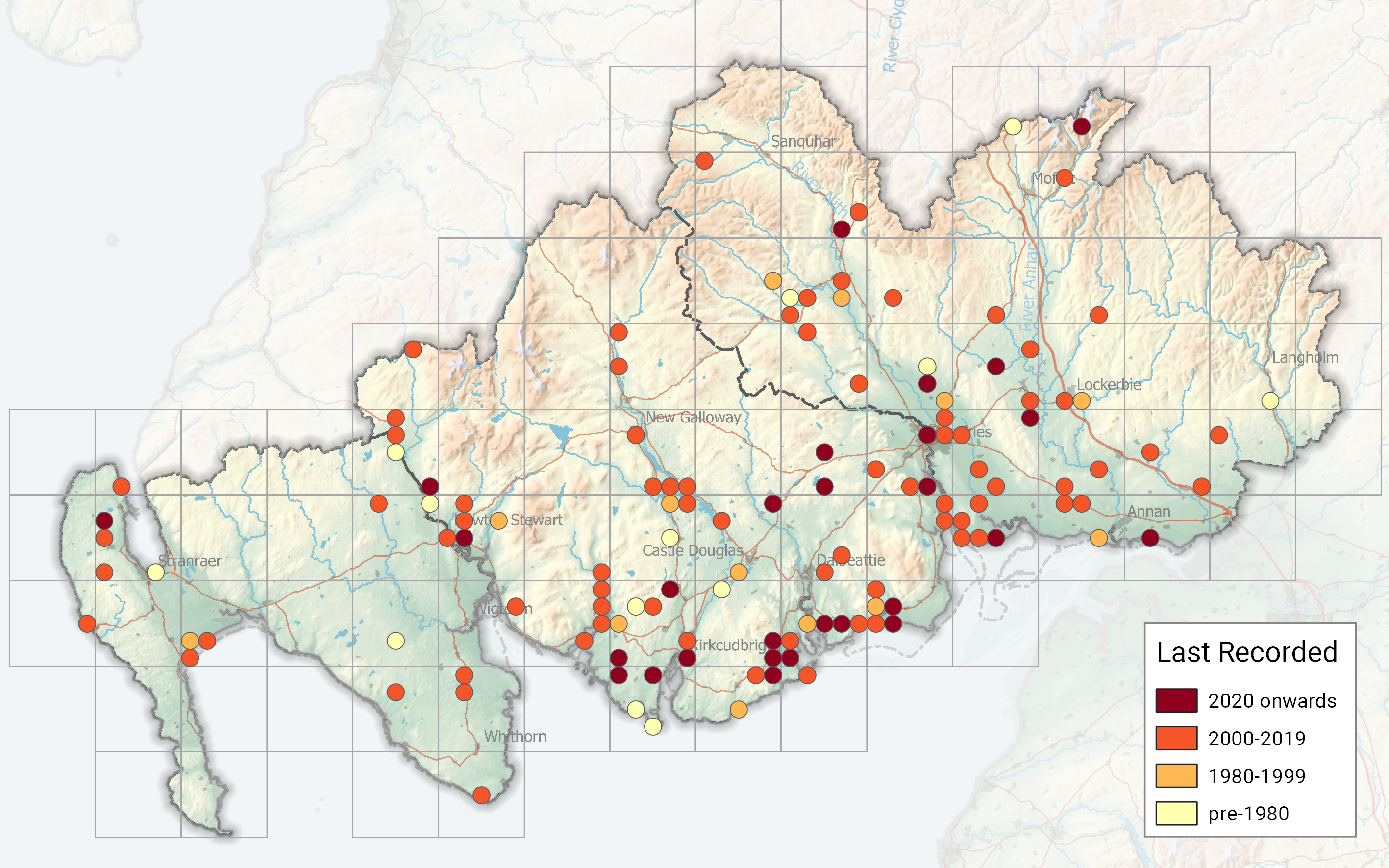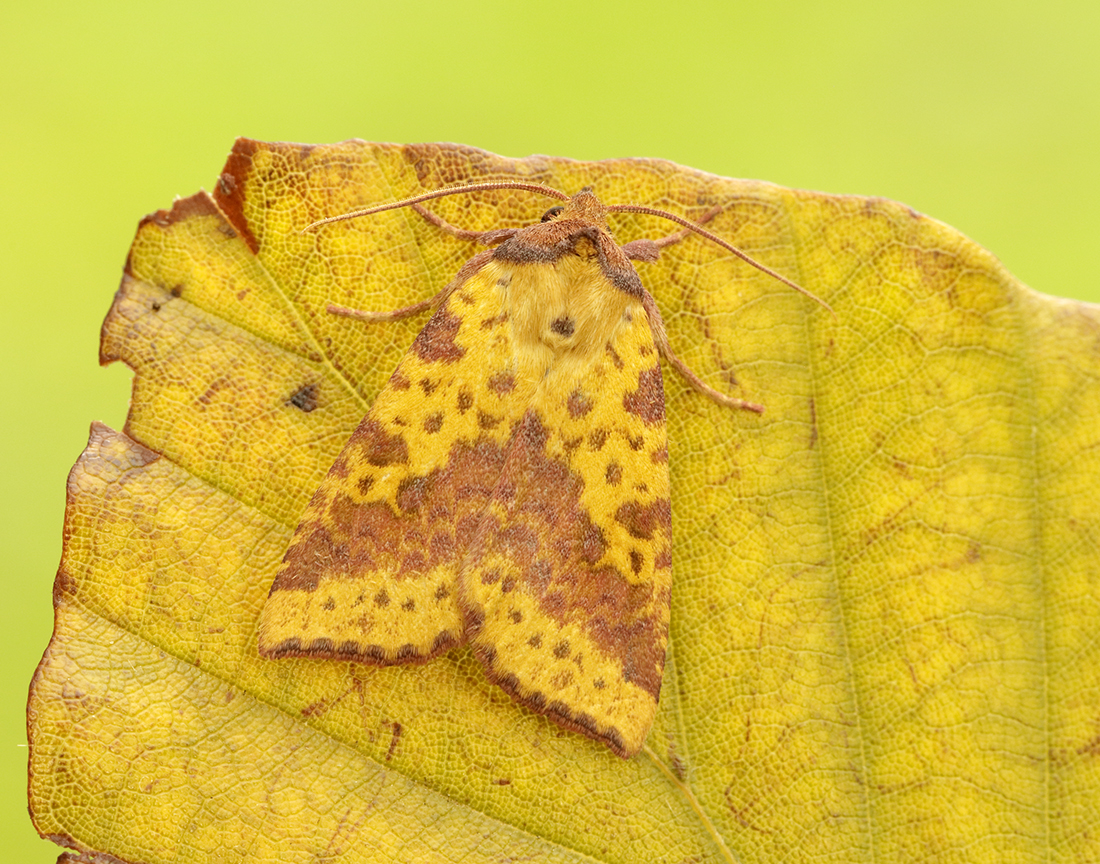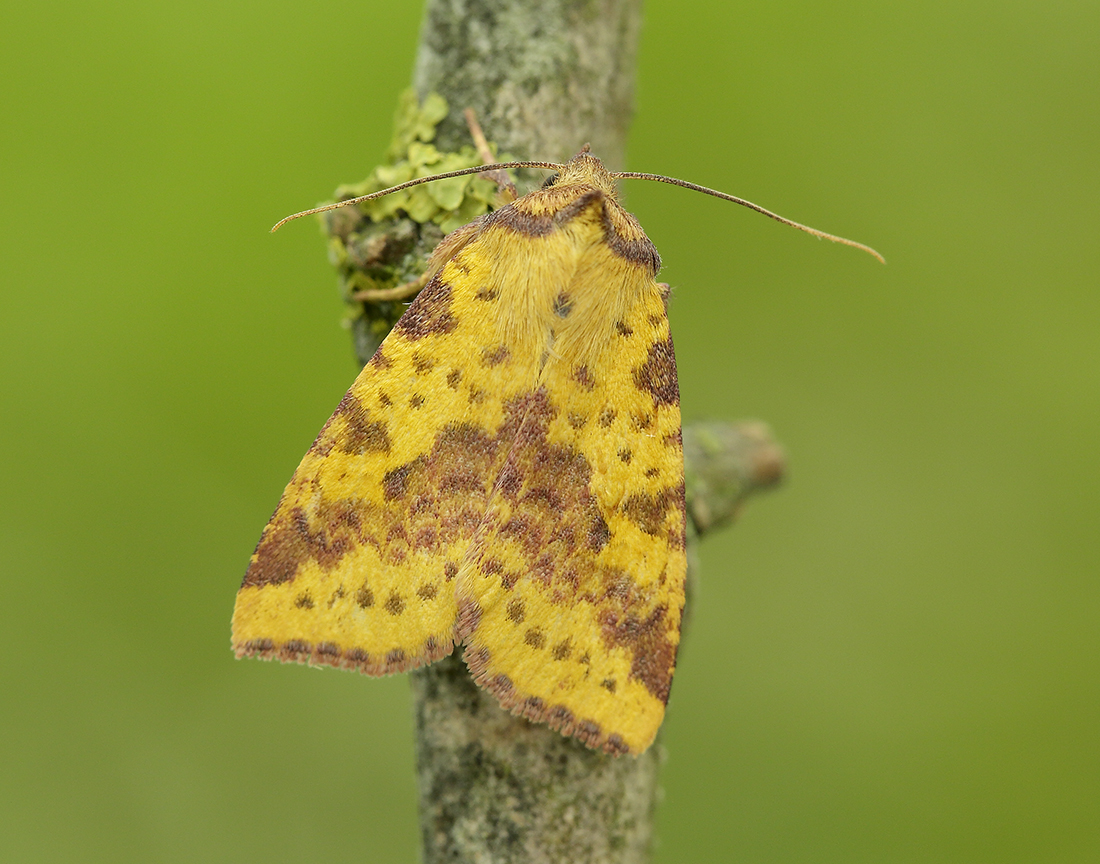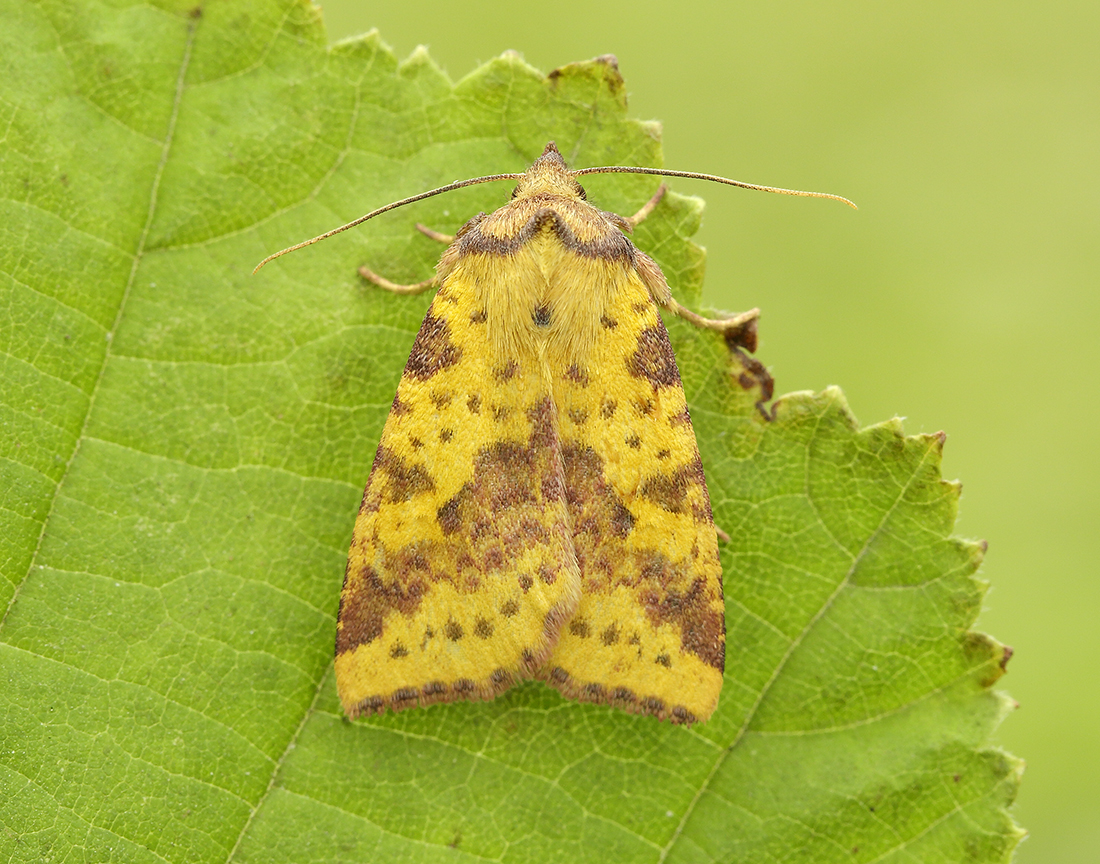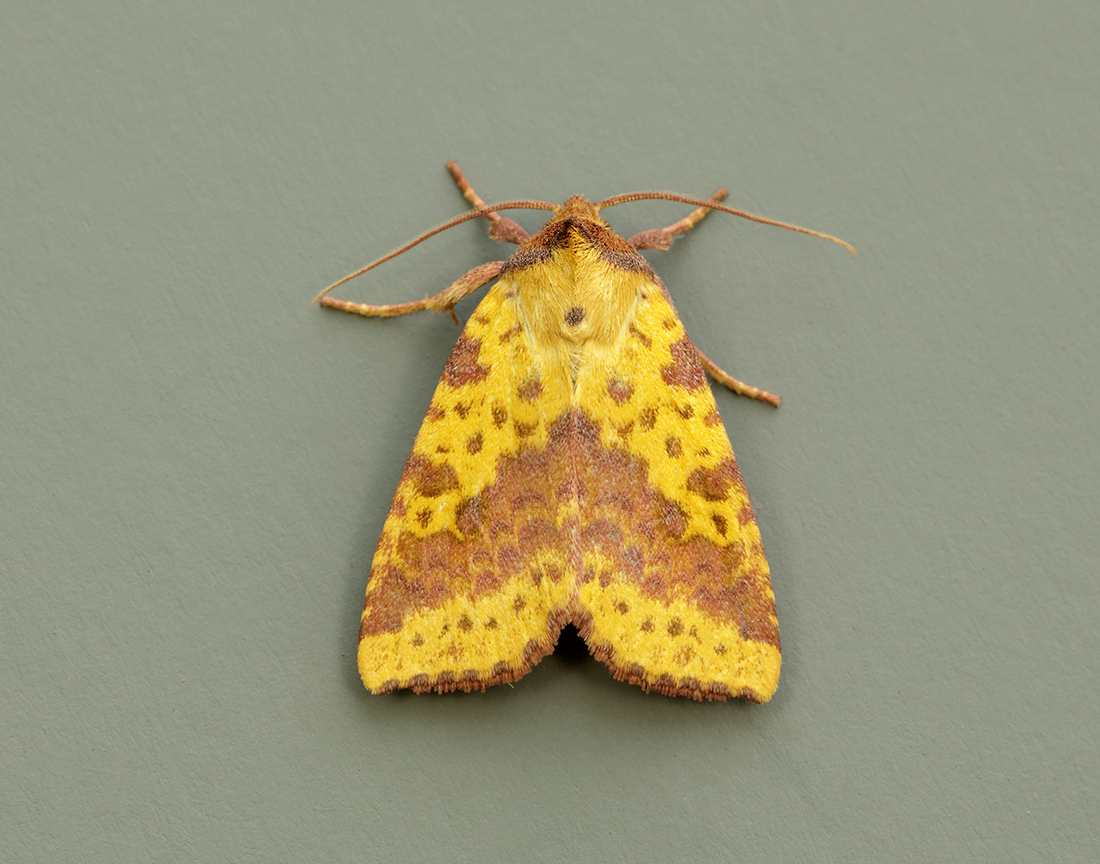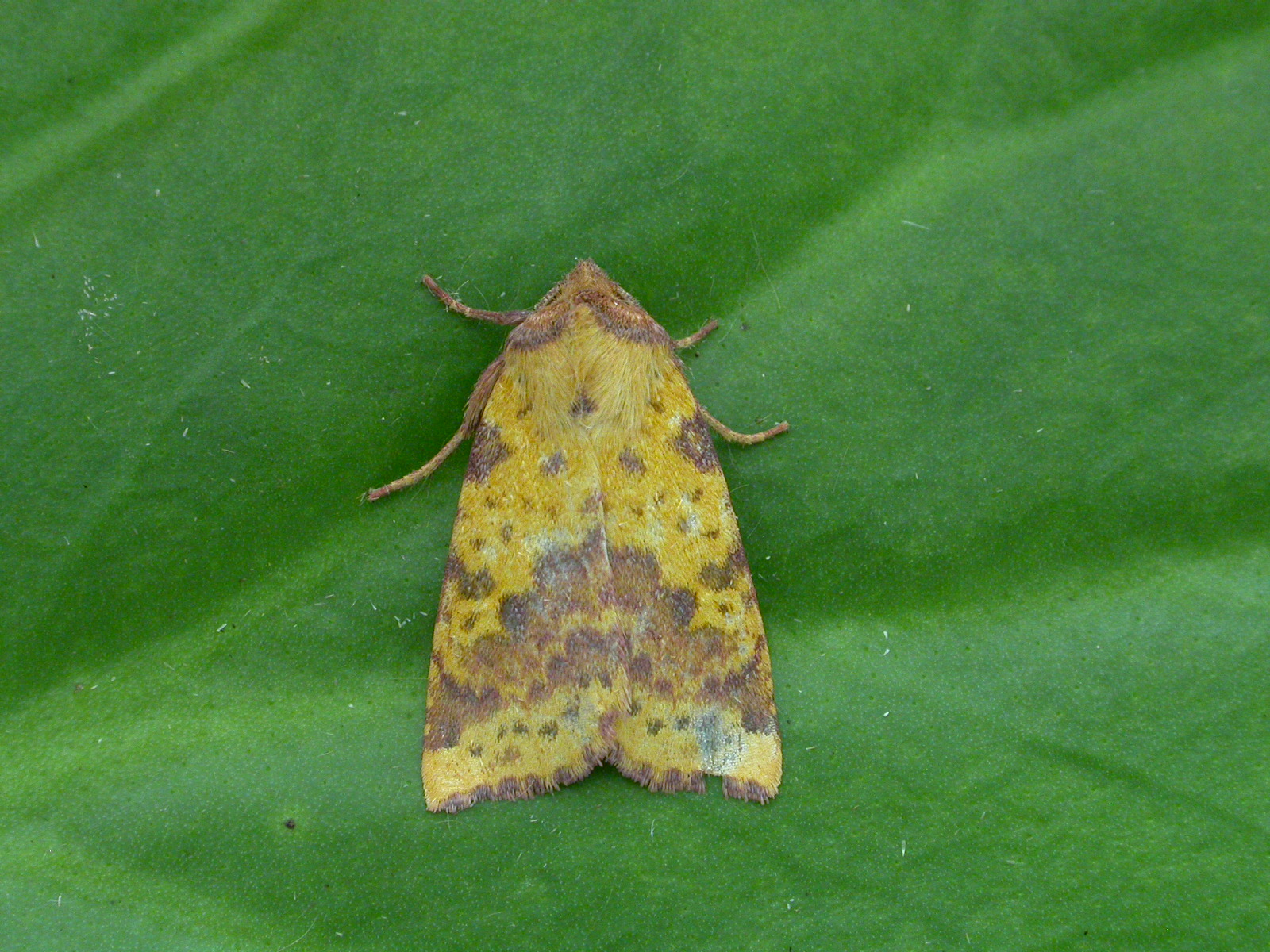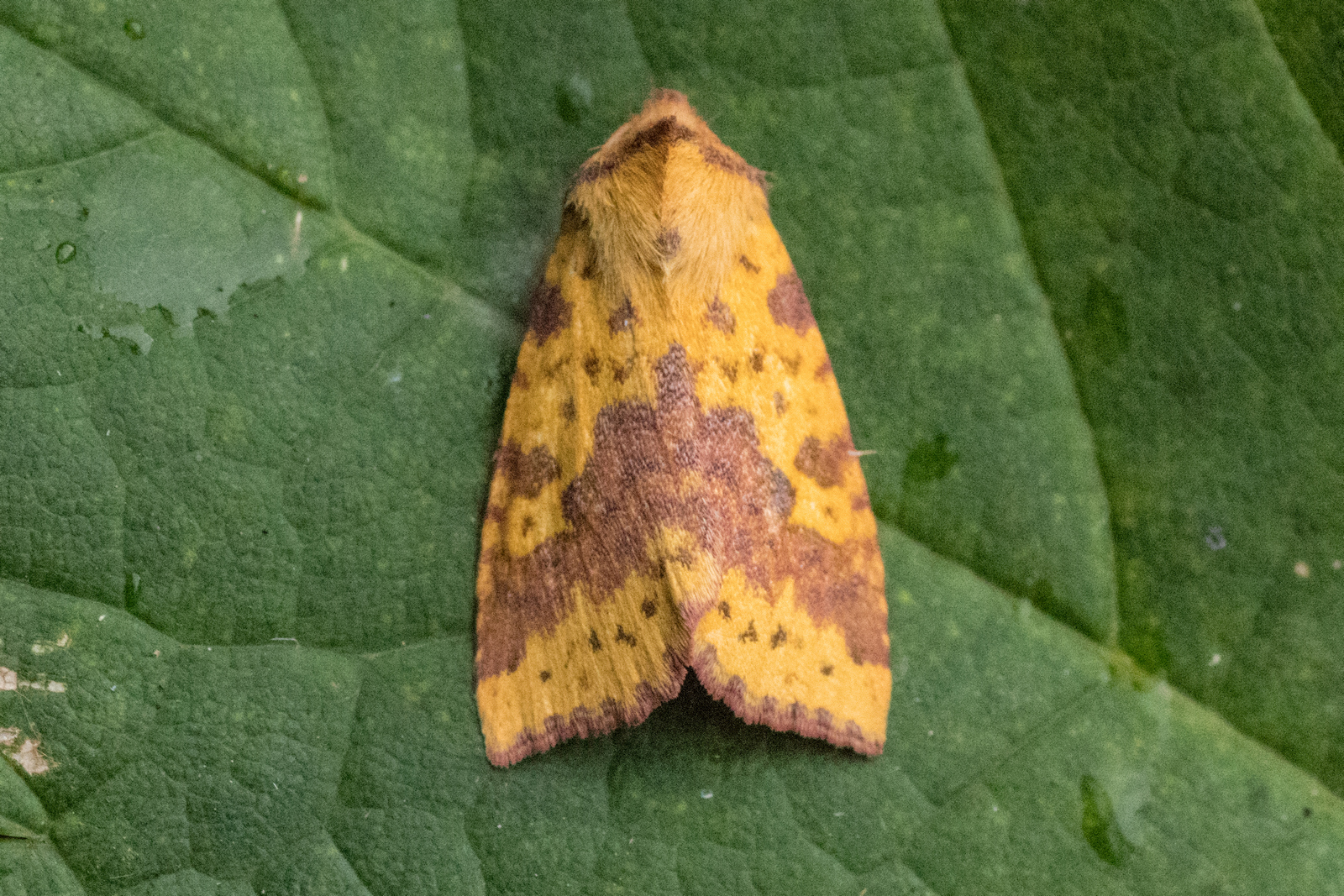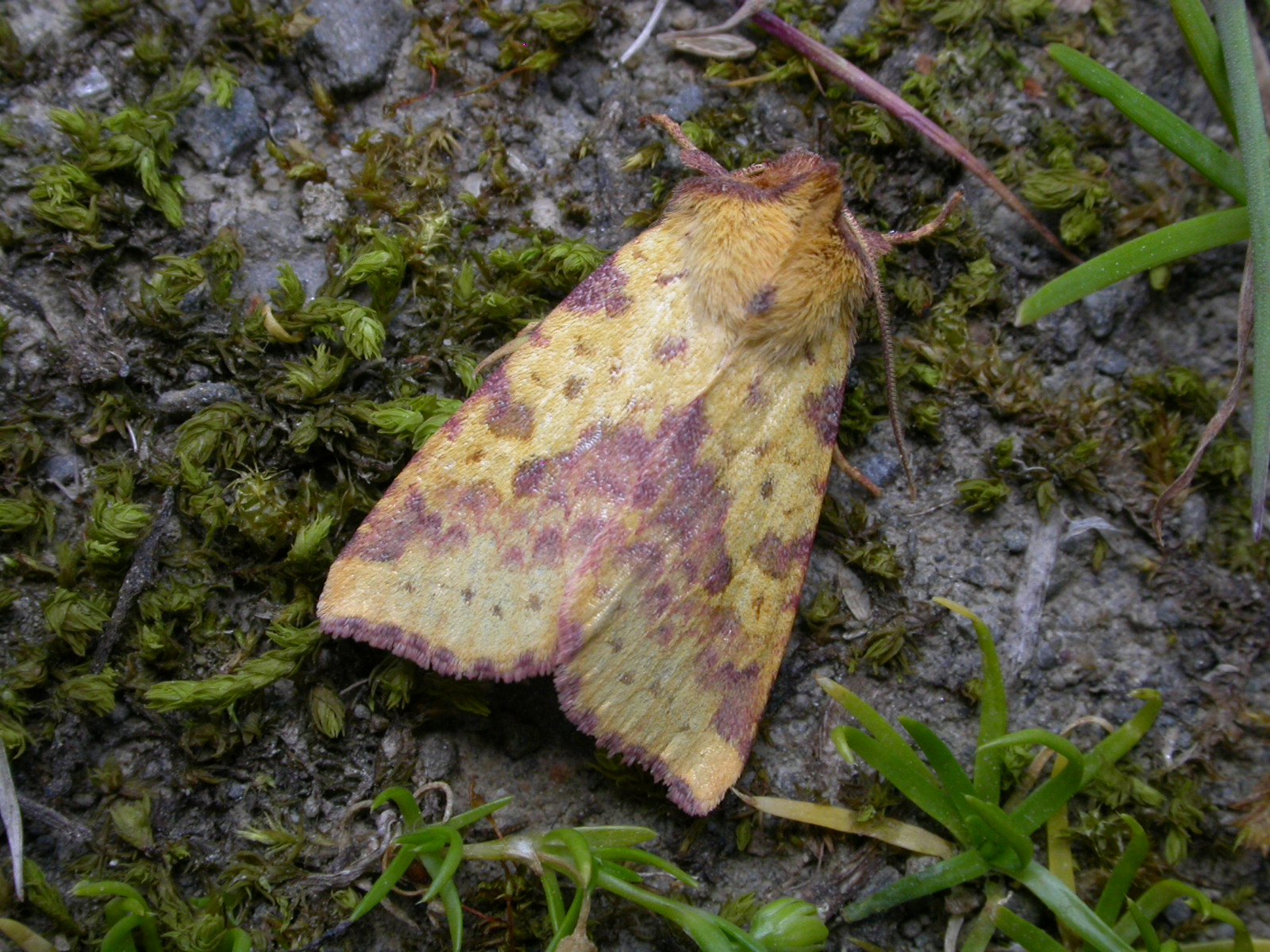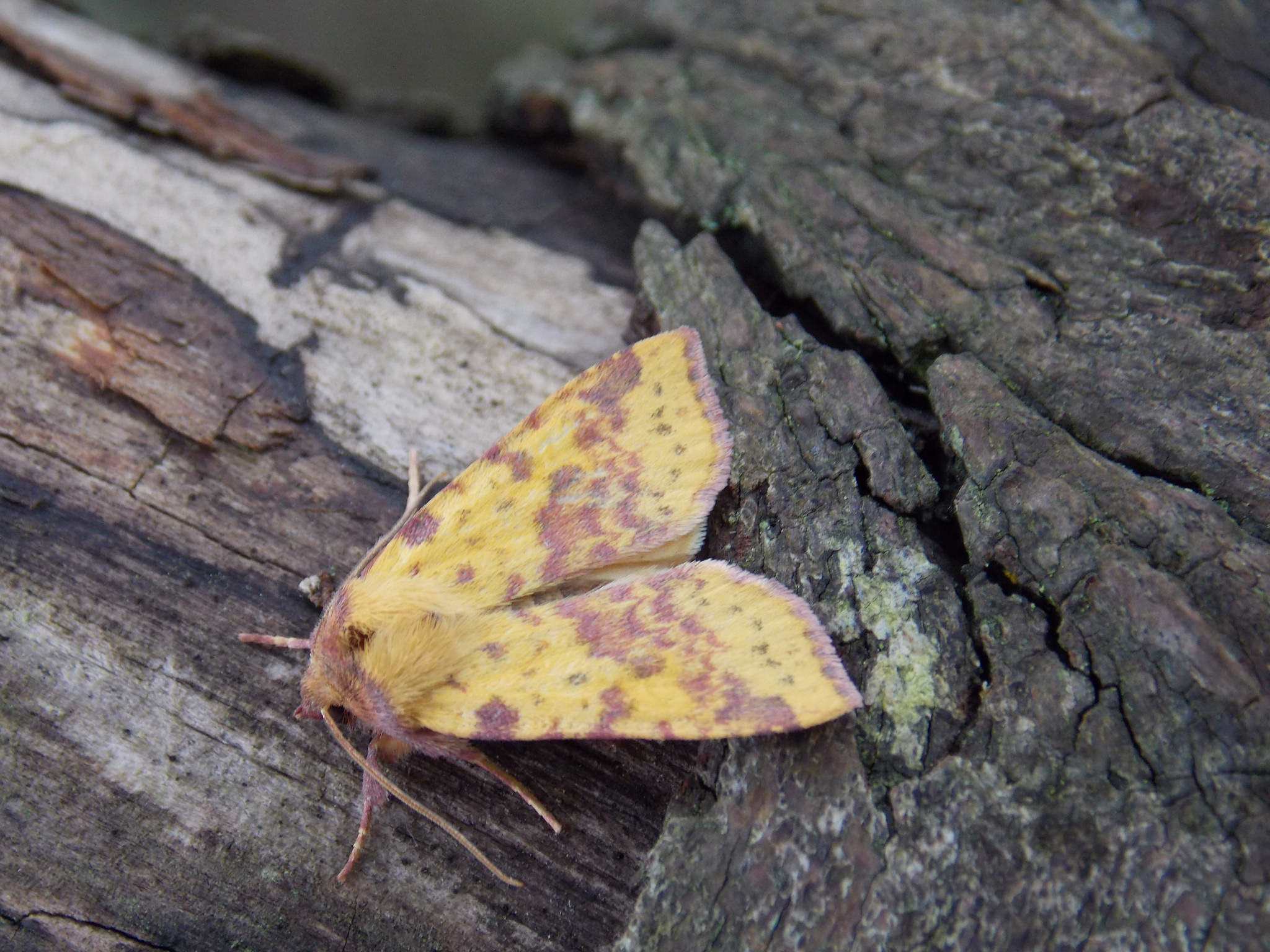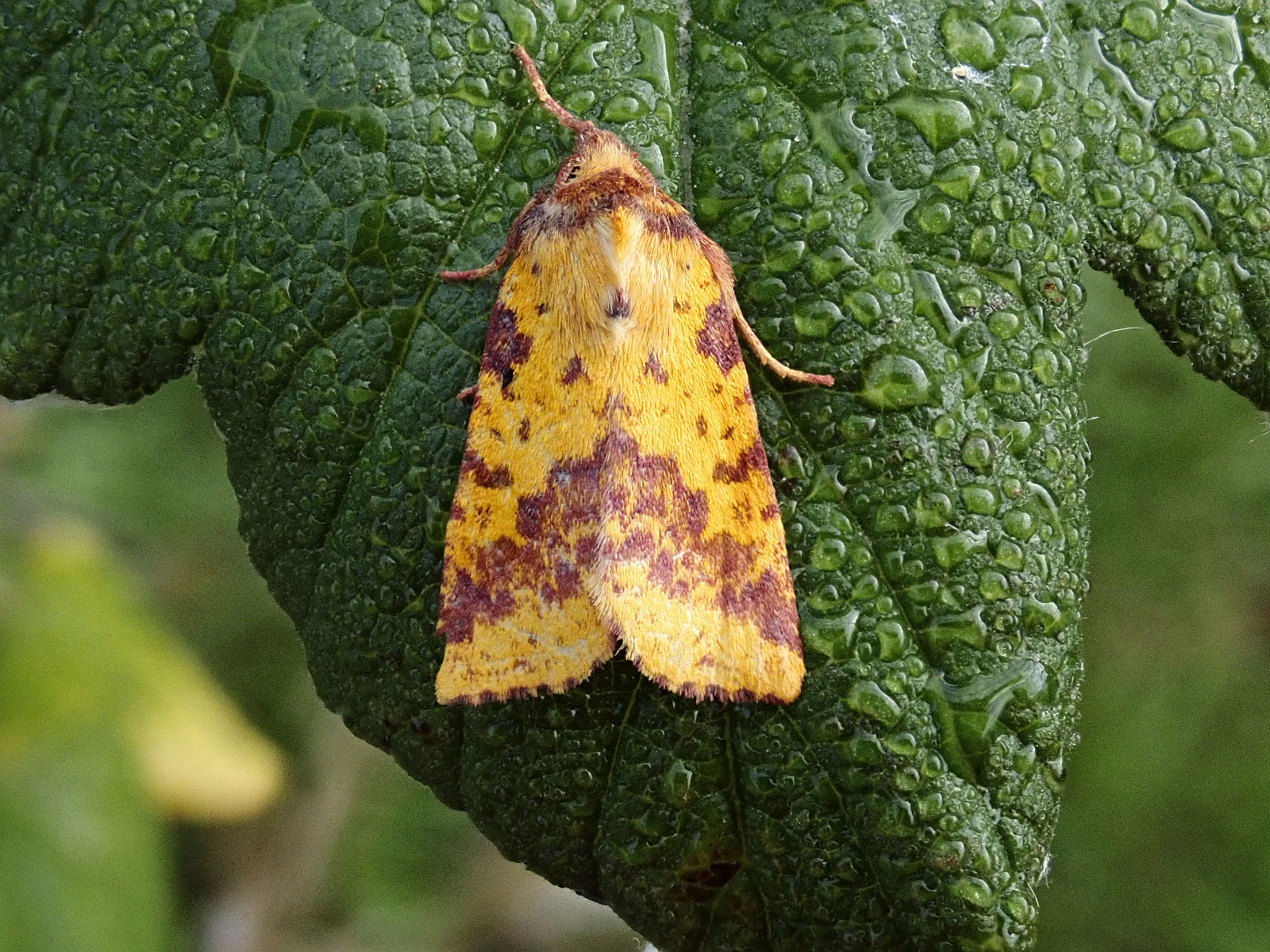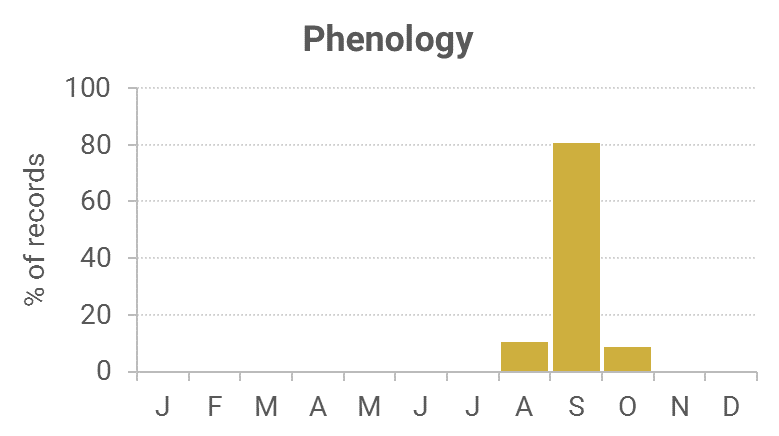Identification
The yellow thorax contrasting with the pinkish-brown head and shoulders should separate it from similar sallows.
Recording Method.
Attracted to light, also comes to sugar and flowers.
Life cycle
One generation. Overwinters as an egg. Larvae are present from late March to early June, feeding inside a catkin, until it falls. It then constructs an underground cocoon, with pupation taking place about six weeks later.
Larval foodplants
The larvae feed on catkins of poplars and sallows, later on docks.
Habitat
Mainly broadleaved woodland, but also fens and marshes and other sites with sallows.
History
Gordon (1913) had found it abundant at heather blossom on 27th August 1906 and again on 22nd August 1910. The larvae common in sallow catkins at Corsemalzie, Wigtownshire.
William Evans received specimens from the Little Ross lighthouse keeper during 1915 to aid his insect migration studies.
Archibald Russell (1944) listed it as occurring near Gatehouse of Fleet (VC73) during the years 1942-43. Sir Arthur Duncan (1909-84) during his lifetime had found it at Closeburn, Tynron and Castlehill, Dumfries (all VC72).
At Irvine House Lodge, Auchenrivock, a fine series was trapped during 1973-74. All the Rothamsted stations contributed about 220 records during 1974-93, proving it to be a widespread moth.
From 1989 to 2010 there were 250 records from the regular trapped sites at Kirkton, Mersehead RSPB, Cally Woods, Durisdeer, Carsfad at Dalry and Carsluith providing most of them, the rest were from scattered sites across the region.

